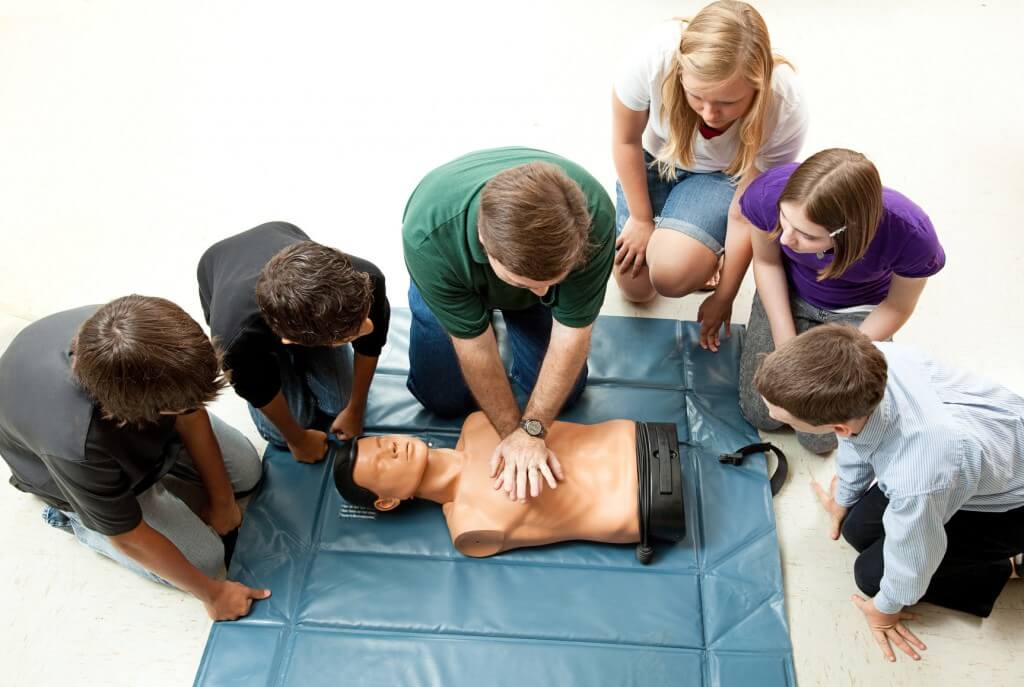Introduction
In today's fast-paced workplace, safety and security is extremely important. Organizations are progressively acknowledging the relevance of developing a risk-free area for staff members. One of the most important components of workplace safety and security training is very first aid and CPR (Cardiopulmonary Resuscitation) programs. These programs not only equip staff members with important life-saving skills however also foster a society of safety and security within the organization. In this write-up, we will explore the myriad reasons workplace security training need to include first aid and CPR training courses, underscoring their importance in improving workplace safety.
Why Work environment Security Training Need To Include Emergency Treatment and Mouth-to-mouth Resuscitation Courses
The integration of emergency treatment and CPR training courses right into office safety training has significant advantages. They equip employees with the expertise and abilities necessary to react successfully to clinical emergencies, reduce healing time for injured people, and potentially save lives. In addition, having actually trained personnel on-site can instill self-confidence amongst staff members and guarantee them that their health is prioritized.
Understanding Initial Aid
First aid describes the prompt treatment offered to a private struggling with a minor or significant health problem or injury until specialist medical aid shows up. Understanding basic emergency treatment concepts can make a considerable difference in emergency situations.
Key Elements of First Aid
Assessment: The ability to examine a scenario quickly can help figure out the ideal actions needed. Stabilization: Recognizing how to maintain a hurt person stops further harm. Communication: Successfully communicating with emergency solutions is crucial for timely assistance.The Importance of CPR
CPR is a life-saving method used in emergencies when a person's heart beat or breathing has actually quit. It involves upper body compressions and rescue breaths to maintain blood circulation and oxygenation until specialist help arrives.
How CPR Works
- Chest Compressions: These assist distribute blood throughout the body. Rescue Breaths: These supply oxygen to the lungs.
Benefits of Emergency treatment and Mouth-to-mouth Resuscitation Certification
Obtaining an emergency treatment certificate or finishing CPR courses features numerous benefits, both for individuals and organizations.
Enhanced Employee Confidence: Workers feel much more safe understanding they have life-saving skills. Reduced Healing Time: Quick feedback with first aid can cause far better end results for damaged individuals. Compliance with Regulations: Many markets require certified workers as part of their health and wellness regulations.Creating a Society of Safety And Security With Training
Implementing emergency treatment and CPR training cultivates a culture that focuses on worker wellness.
Encouraging Teamwork
Training sessions frequently involve team-building workouts that boost collaboration among employees.
Building Count on In between Workers and Management
When management purchases employee training, it shows commitment to their wellness, causing increased morale.
First Help Surges vs. CPR Courses: What's the Difference?
While both kinds of training courses are necessary, they focus on different ability sets.
First Help Courses
These programs cover a wide range of topics beyond simply cardiac emergency situations, consisting of:

- Wound care Burns Choking
CPR Courses
CPR programs particularly focus on methods connected to cardiac arrest scenarios, stressing:
- Adult CPR Child/ infant resuscitation Use of an Automated External Defibrillator (AED)
Choosing the Right Training Provider
Not all training companies are developed equivalent; for that reason, choosing one that satisfies your organization's demands is critical.
Accreditation Matters
Ensure that your chosen supplier offers recognized programs identified by appropriate authorities.
Instructor Experience
Consider teachers' certifications; experienced fitness instructors frequently provide richer learning experiences through real-world examples.
Incorporating Emergency treatment right into Work Environment Security Policies
Organizations ought to incorporate first aid needs into their more comprehensive security plans for detailed coverage.
Regular Training Updates
Conducting routine correspondence course makes certain that knowledge stays current amongst employees.

Creating Emergency Action Plans
Having clear plans in place can assist trained workers throughout emergencies.
Legal Effects of Emergency treatment Training in the Workplace
Employers have legal obligations regarding office security; executing emergency treatment training can help mitigate threats associated with non-compliance.
Negligence Claims
Failure to supply appropriate training may leave employers susceptible to suits if a case occurs due to absence of preparedness.

FAQ Section
What is included in a regular emergency treatment course?- A common emergency treatment course includes direction on evaluating injuries, dealing with wounds, taking care of burns, taking care of choking events, and executing mouth-to-mouth resuscitation if necessary.
- Most mouth-to-mouth resuscitation programs last in between 4-- 6 hours relying on whether it's standard or advanced training.
- While not constantly legitimately mandated, having licensed team member can dramatically improve workplace safety and security standards.
- Many approved organizations supply on-line revival options for emergency treatment certificates that include evaluations using video clip conferencing.
- Yes, industries such as building and construction, healthcare, education, and manufacturing commonly have regulative needs demanding qualified personnel on site.
- It's suggested that staff members take part in correspondence course every 2 years or sooner if there are significant modifications in procedures or regulations.
Conclusion
To sum up, incorporating emergency treatment and mouth-to-mouth resuscitation right into work environment safety training is not just a choice yet learn CPR in Sydney CBD a necessity in today's work environments where emergency situations can emerge anytime. Organizations advantage greatly from having actually educated workers prepared to react efficiently throughout dilemmas while cultivating an ambience where worker well-being takes precedence over all else. Therefore, it ends up being apparent why workplace safety and security training should include emergency treatment and mouth-to-mouth resuscitation training courses-- they save lives while advertising an aggressive method towards health and safety standards within organizations throughout various sectors.
By prioritizing such essential training efforts-- emergency treatment certifications acquired through trusted carriers together with functional hands-on experience-- business can significantly enhance their total emergency situation preparedness levels while likewise building stronger groups with the ability of tackling any scenario head-on!